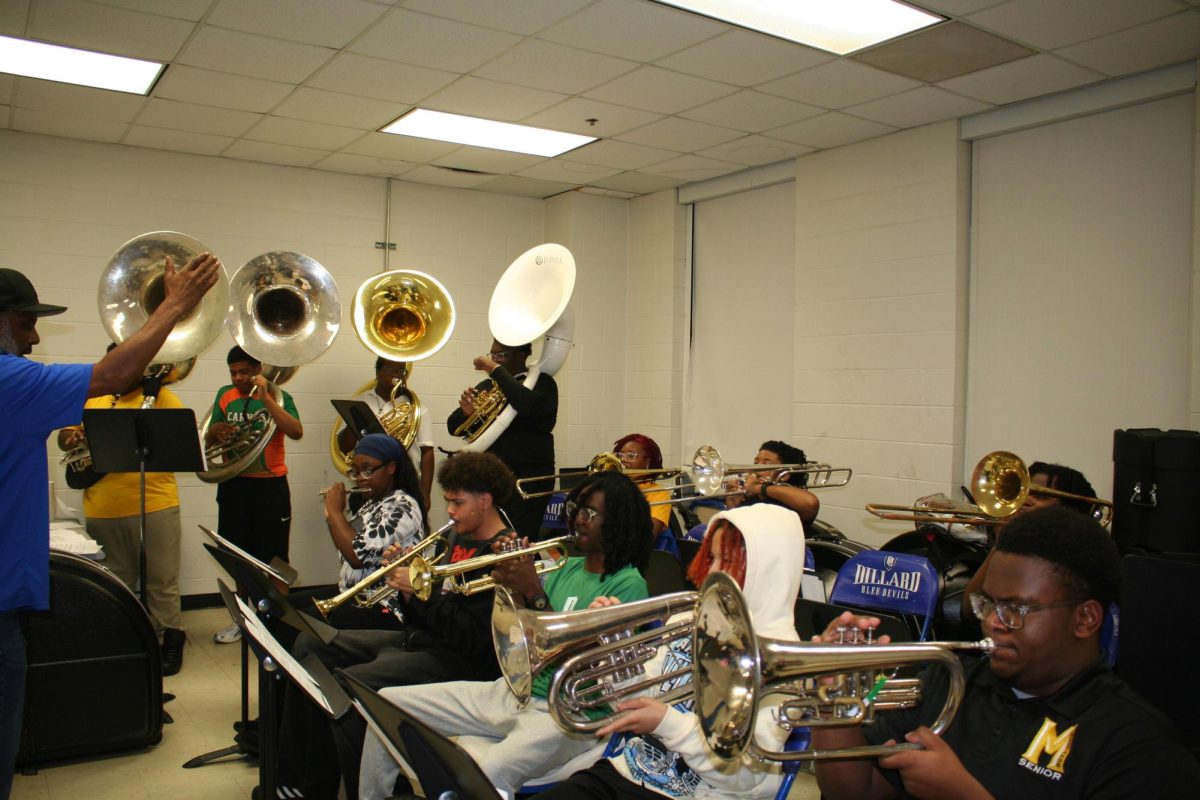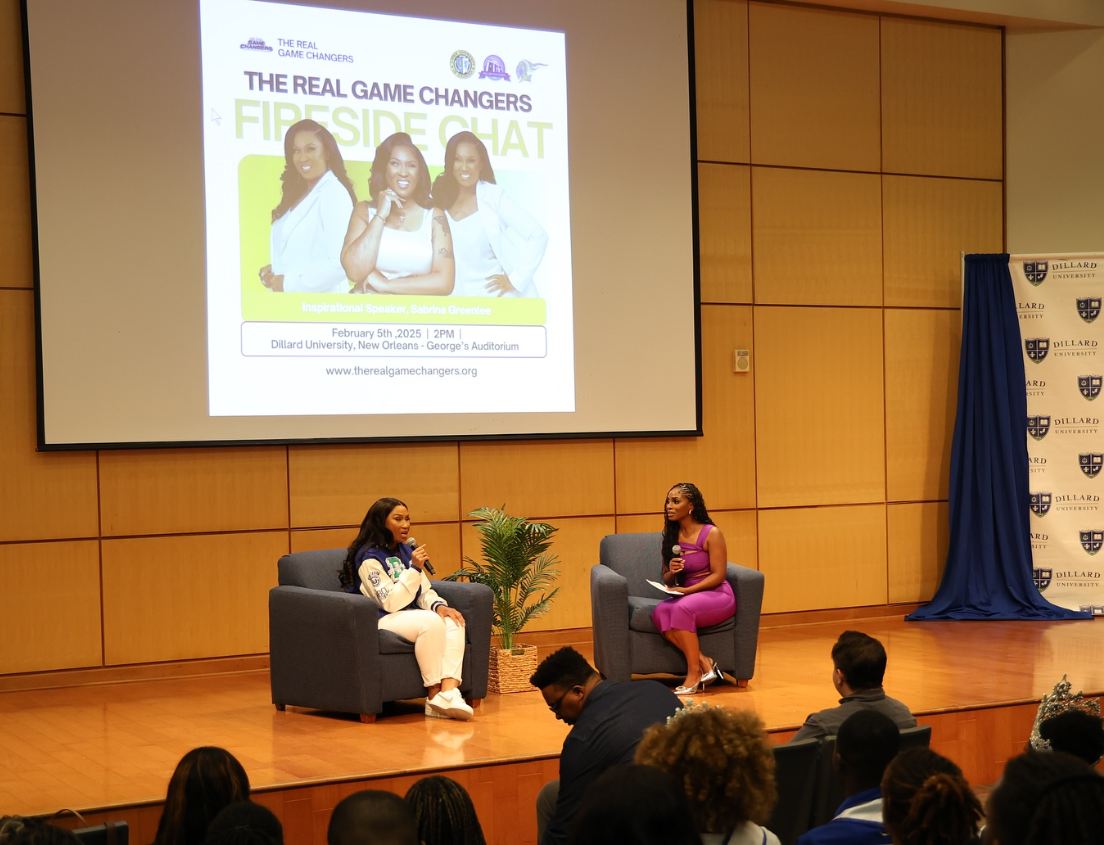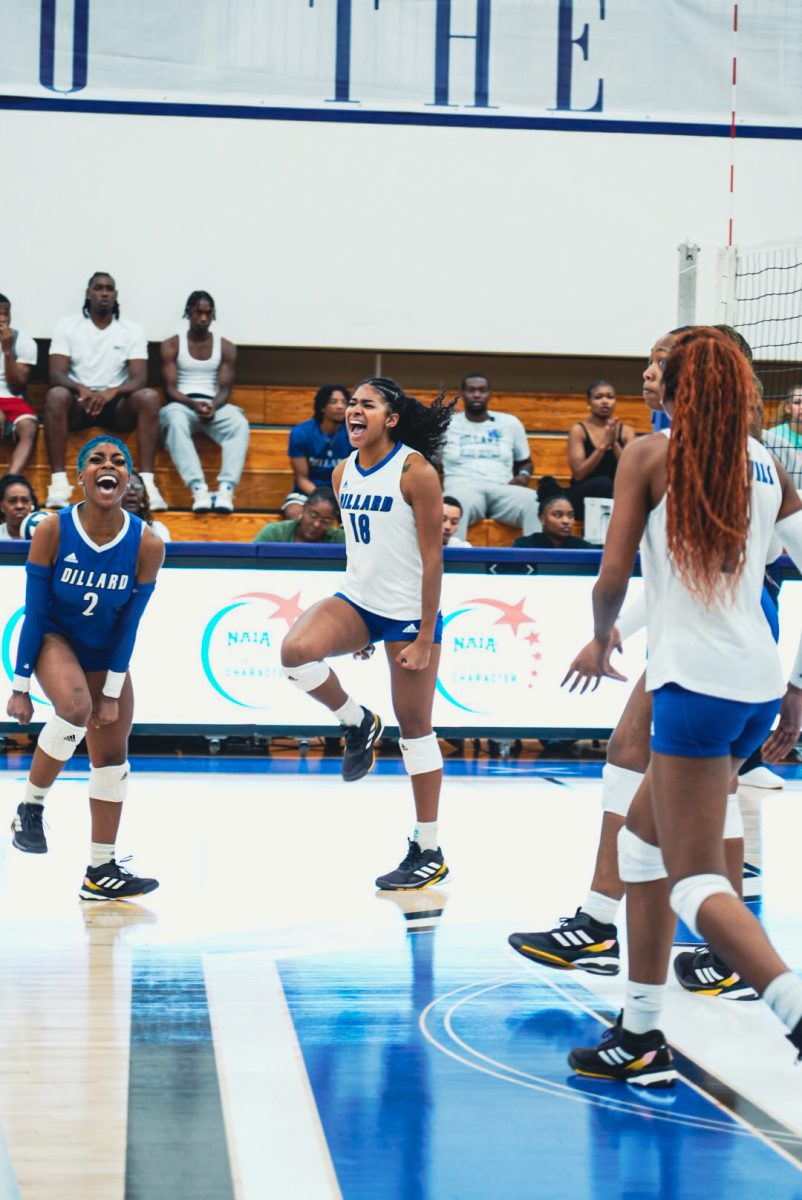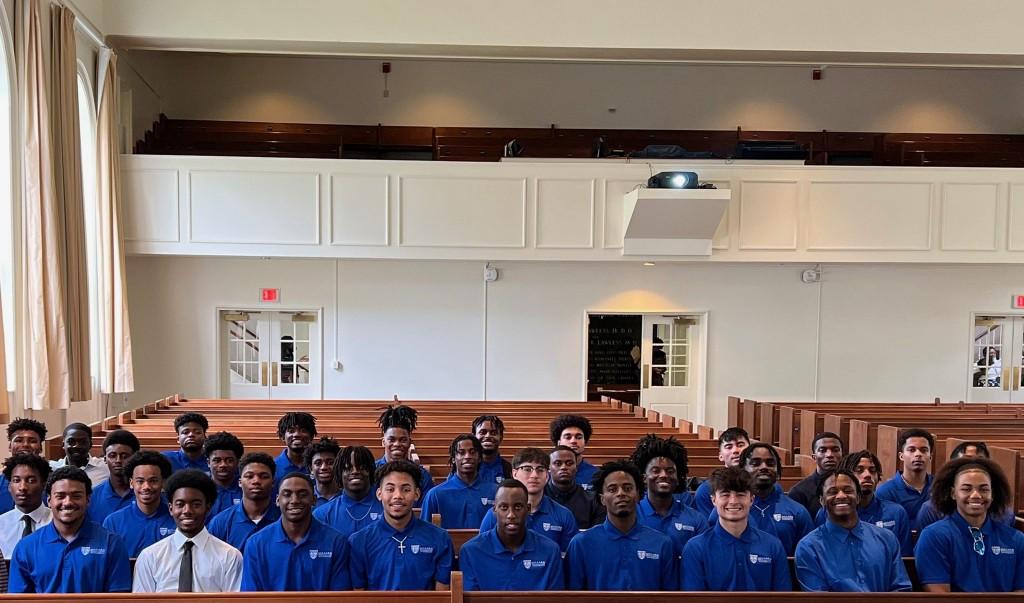
Photo Credits: Frank Duplessis/ Courtbouillon
Left to Right: Ran'ta Simmons and Chaunteion Hall
DU students are committed to continuing their education and living full lives despite sickle cell anemia.
NEW ORLEANS (March 22, 2019) – Frequent doctor visits and missed school days have been routine since childhood for DU students Chauntenion Hall and Ran’ta Simmons, but they both are committed to continuing their education and to living full lives despite sickle cell anemia.
Hall, a senior social work major from New Orleans, and Simmons, a freshman chemistry major from New Orleans, are among the 100,000 Americans living with sickle cell anemia; it occurs in one of every 365 African American births, according to the U.S. Centers for Disease Control. Many more people carry the trait but don’t have the disease. It can be traced to the disease malaria, which was once epidemic in parts of Southern Africa, Asia and the Mediterranean.
Sickle cell anemia is a medical condition in which the body doesn’t have enough healthy red blood cells to carry oxygen through the body. Normally, red blood cells are round and flexible, but sickled or moon-shaped red blood cells become inflexible, resulting in less oxygen being transported. The results are pain crises, swelling and infections for the patient.
Dr. Mack E. Crayton III, an educational consultant and adjunct professor of biology and genetics at Dillard University, said before medical intervention was available, patients “would die pretty young” – often before the age of puberty. Now it’s common for patients to receive blood transfusions as a treatment. The latest medical advance is bone marrow transplants as a cure, but patients need a donor. According to the World Health Organization, an estimated 50,000 bone marrow transplants are performed worldwide every year and could cost between $350,000-$800,000, depending on the age of the patient and the type of transplant needed, according to costhelpher.com.
For Hall, frequent doctor visits in secondary school added the stress of the threat of disciplinary action for missed days, so moving to a college schedule has actually been beneficial, she said.
Before college, Hall said, “I would have to go back and forth and always make sure [to have] proper paperwork” for school. Even so, she said, school administrators “weren’t even accepting of that, so that was difficult.”
Now that she can plan her own class schedule, “I make the appointments… [to] be scheduled on certain days,” said Hall. And her professors allow her to make up assignments.
“Some days I will not be in class. Some days I may not participate. I may just come down and sit down and be quiet and go about my business,” Hall said.
Surprisingly, Simmons said she did not face severe symptoms until her junior year of high school, when she began to have pain crises, headaches, migraines and hot flashes.
“It could last for like a few minutes, a few hours, or a few days, two weeks. It doesn’t really have a time limit,” Simmons said.
Simmons was in the hospital the first week of March for a pain crisis.
Crayton said many patients have a high pain threshold, “so usually they could go right to class in the middle of an episode without giving any indication that they are actually in pain.”
Even so, Simmons said, “Everybody has that thing that they go through that may or may affect their future. Sickle cell is just one of those things for me because I don’t know if it will affect me in the future or not until I get there. So I really just go with the flow.”
Hall said she and others with sickle cell are “warriors.”
“We aren’t someone who are incapable. We aren’t someone who is always disabled, and even if you’re disabled, you’re still capable of doing things. We are not sickle cell.”
Simmons originally planned to attend Southeastern Louisiana University, but she was convinced to attend Dillard to be closer to her physicians at Children’s Hospital.
“That was a tough one for me,” she said. “When you have sickle cell, you don’t want nobody to treat you differently…[Y]ou want people to treat you like you’re normal,” Simmons said.
Hall, who said she gets blood transfusions about every eight weeks, said her brother has the trait so he has no symptoms.
Hall evades all contact sports to avoid triggering a crisis. Instead, she practices yoga and walks to stay healthy. These physical activities help circulate healthy blood flow and alleviate pain symptoms.
Simmons said she also avoids extreme physical activities. She takes her prescribed medication, works out and drinks plenty of water.
Hall was hospitalized during her sophomore year for a month. She missed her final exams, but her professor allowed her to make up the work.
After graduating from Dillard, Hall said she plans to leave New Orleans and complete a master’s degree in social work. As always, that will mean finding new doctors to treat her illness when she moves and a job that is accommodating to her condition.
“I know [relocating] will be something that could be a challenge but it’s just a matter of how I plan it,” Hall said.
Simmons also plans to finish Dillard University and work as a chemistry teacher. She eventually wants to start her own preschool.

























